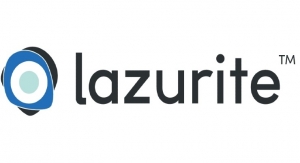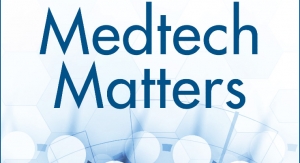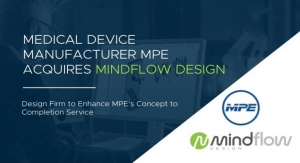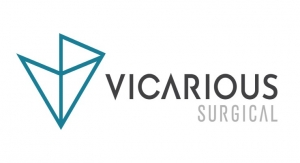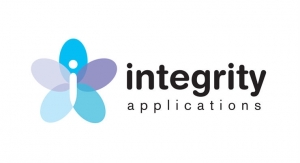Sean Fenske, Editor04.06.16
Many involved with innovation and development in the medtech space face a number of challenges that impede their abilities to bring new medtech to market in a timely manner. There are a number of reasons for this including regulatory oversight, risk aversion, and business planning by the larger companies more focused on shareholders. While there are a number of industry leaders who privately share these opinions, there are few willing to speak as frankly about them as the person who spoke with MPO for this interview.
Dana A. Oliver is the senior director of research and development at Medtronic’s Surgical Technologies ENT/NT division. He’s recently released his second book titled, “Mantra Design—Innovate, Buy or Die!” which is a follow-up to his first book, “Mantra Leadership—Don’t Become the Emperor with No Clothes!” Oliver has very distinct opinions on what challenges stand in the way of real innovation in medtech and what changes need to happen to eliminate them. In the following interview, he speaks of his new book, how the FDA is adversely impacting innovation, and how companies

Dana A. Oliver is the senior director of research and development at Medtronic’s Surgical Technologies ENT/NT division.
can remain innovative despite the obstacles in their way.
Sean Fenske: There are quite a few who are calling for innovation in the medical device space. What does innovation mean to you?
Dana A. Oliver: First let me explain that ideation is the creation of ideas, whereas innovation is the distillation to practice of those ideas and includes the advancement of technology—in this case, medical technology. If your company is dedicated to growth, innovation is readily available, but the average sizable medical device company is, frankly, a value company and is more interested in meeting their quarterly earnings. This means that these sizeable players are more interested in acquiring new technologies than developing them because an acquisition on the P&L, if accretive, looks more attractive than investing in local research and development. The irony is that the average start-up or growth medical company chose to pursue technology ideas that were born out of the more established medical institutions who were not committed to investing in them in the first place.

Fenske: Speaking of innovation, you recently put out your second book. Can you please tell me what “Mantra Design” is?
Oliver: Mantra Design is a collection of my innovation philosophies and best practices that reveals to innovation leaders how to identify your customer’s unmet needs and how to develop them into patent-protected, premium-priced, market-share leading products. Think of it as a self-help business innovation how-to book.
Fenske: How does the subject relate to the medical device industry?
Oliver: I have spent the last 30 years of my career in research and development in the medical device space and the book shares my philosophies that I have evolved and culminated in its writing over these past three decades. These same practices helped grow Surgical Technologies from $100 million to approximately $2 billion in a period of 14 years. With that said, these practices are not specific to medical devices, but are relevant to any company’s innovation process due to their focus on growth and customers.
Fenske: In an industry such as medtech where an innovative product can take years before it hits the market, how does a company stay innovative?
Oliver: One of the mantras I naturally embrace and share is the “Spend 15 percent of Your Time on Innovation!” rule. In short, this means at any given time, my R&D team as a whole is spending 15 percent of their time on next generation ideation and distillation to practice of next generation technologies. This ratio also means that 85 percent of my team is focused on advancing the core products and technologies in support of annual revenue growth that need to move the annual operating plan needle.
Another benefit to the 15 percent contingency pool is that it ensures I always have a full pipeline of next generation technology waiting in the wings. I can momentarily tap this team if one of my active programs runs into trouble, but this 15 percent slice of their time is to focus on keeping the pipeline full.
Fenske: Does the FDA and its procedures stifle innovation or is it a scapegoat/excuse for companies who aren’t innovative?
Oliver: Without question, FDA is retarding medical device advancement. My words, of course, and not Medtronic’s opinion, but FDA has positioned itself to be adversaries of business and they regularly act like bullies. Their perspective is not reasoned and it clearly retards the advancement of medical devices and medical therapies. Further, it’s costing tax payers billions of dollars because their demand on compliance issues, which is not making products safer or more efficacious, is requiring medical device companies to hire multitudes of employees to work in areas such as Compliance Auditing, CAPA, and Complaints, in addition to the adoption of expensive electronic systems to harbor the vast information demanded, along with attempts to ensure electronic signatures are validated. These many hires and systems put in place help prevent a missing signature and minimize pagination errors, but they are doing little to prevent misbranding and product alteration. The reality is that these demands and expectations are increasing business overhead that is simply passed along to tax payers through government reimbursement. If FDA were true business partners and were reasonable and listened, the country would be better off. My team regularly jokes that we are developing Design History Files and not products. Instead of focusing on the product design and its safety, we are spending a disproportionate time focusing on ensuring check marks are in place to satisfy internal and government audits.
Fenske: What’s your opinion on the innovation that’s happening outside the walls of the traditional medtech companies, such as at Google, Apple, and IBM?
Oliver: Competition is good for innovation; look at the innovation that followed the breakup of AT&T’s monopoly—the by-product is the Apple I-phone and the rest is history. I do think this is good for innovation and I’m hoping it shakes up the medical device industry titans. The medical device industry is operating under an innovation philosophy that I call, “safe research.” This is favorable incremental and predictable advancement of technology and it’s not too extreme for the FDA to accept. This is also another example of how medical technology is moving slower than it could otherwise.
Fenske: Does the medical device industry need to change the way it thinks about innovation in order to truly become innovative?
Oliver: There are two major impediments to the industry, which in my opinion, limit innovation. The first is that the major medical companies are thinking short term to satisfy Wall Street’s earnings expectations. Second, why be too disruptive if the FDA has no incentive to approve cutting-edge technologies. Think about the traditional pharmaceutical clinical trial approach to bring forth a cure for Ebola versus what took place during the last outbreak in the US. The FDA has no incentives to take risks unless the public pressures it to do so; it’s safe to say no.
Fenske: Much innovation happens at the small, start-up company level, which is then acquired by a larger medical device OEM. Is this a good innovation strategy for the larger OEMs?
Oliver: I personally don’t prescribe to the “acquire and milk” strategy employed at the average medical device company. Innovation happens at small companies because they are focused on growth and satisfying unmet needs. The problem is that following acquisition by larger companies, they fall into the large institutional philosophy that limits the investments needed to keep growing them at an accelerated pace. Further, more than 50 percent of all acquisitions fail to give back value. I do support tuck-in acquisitions to augment a company’s portfolio, but I do not embrace the larger ones.
I have another mantra: “Dance with the Girl You Came With!” This means to stay true and continue to invest in the technologies that made the company great in the first place. Companies can continue to grow if they are dedicated to investments in R&D at 10 percent or greater of their revenues and if they continue to evolve their core brands through their customer’s eyes.
Fenske: Are changes needed within the medtech industry before we see a significant increase in the pace of innovation?
Oliver: Innovation is retarded by the largest medical device institutions because they prescribe to being value companies and not growth companies. Further, the FDA is risk adverse and not truly interested in disruptive technologies. I’ll repeat myself, quarterly earnings myopia hurts true cutting-edge research and for the FDA, it’s safe to say no.
Fenske: What do you think the impact of the device tax suspension will be on innovation?
Oliver: Medical device companies sadly have already restructured to accommodate paying the taxes and this resulted by lessened research and development budgets, employee reductions, and deferred infrastructure investments. Now that this has already occurred, companies will reevaluate how best to position those monies, but my guess is that a significant percentage will be moved to make the companies more financially attractive while a lesser percentage will be reinvested back into research and development.
Fenske: What’s ahead for innovation in the medtech space in five years? Ten years?
Oliver: There are many interesting areas to watch—additive manufacturing or 3D printing, wearables, consumables, and stem cell research. Let me say there is not a lack of innovation going on; it’s a lack of funding and speed to market. Advancing technologies outside of medical, such as smaller, faster, and more flexible electronics and additive manufacturing, will be adopted and introduced into medical devices. Envision an artificial joint from a custom-printed technology or clothes that sense when someone suddenly falls or their blood pressure rapidly changes, signaling a heart attack or stroke, that automatically has your connected phone call 911. Think about swallowing a pill that monitors the body’s function and gives a report out a week later. Or one of my personal biggest frustrations is that people are dying while waiting for an artificial organ transplant, but what if someone could supply a sampling of their own DNA and have a laboratory grow a replacement organ. These opportunities in my eyes are very probable.
Fenske: Before closing, do you have any other thoughts or comments you’d like to share?
Oliver: I would hope that the FDA gets new leadership interested in partnering with medical device and pharmaceutical companies for the advancement of medicine and betterment of the general public. The agency’s existing tactics are more wasteful than good or helpful. Further, I would like to see medical device CEOs have a significant portion of their pay and equity determined by long-term business health (three to five years out), which would drive improved fiduciary responsibility. CEOs are too focused on rewarding shareholders instead of stakeholders. These two changes would better business and society as a whole.
Dana A. Oliver is the senior director of research and development at Medtronic’s Surgical Technologies ENT/NT division. He’s recently released his second book titled, “Mantra Design—Innovate, Buy or Die!” which is a follow-up to his first book, “Mantra Leadership—Don’t Become the Emperor with No Clothes!” Oliver has very distinct opinions on what challenges stand in the way of real innovation in medtech and what changes need to happen to eliminate them. In the following interview, he speaks of his new book, how the FDA is adversely impacting innovation, and how companies
Dana A. Oliver is the senior director of research and development at Medtronic’s Surgical Technologies ENT/NT division.
Sean Fenske: There are quite a few who are calling for innovation in the medical device space. What does innovation mean to you?
Dana A. Oliver: First let me explain that ideation is the creation of ideas, whereas innovation is the distillation to practice of those ideas and includes the advancement of technology—in this case, medical technology. If your company is dedicated to growth, innovation is readily available, but the average sizable medical device company is, frankly, a value company and is more interested in meeting their quarterly earnings. This means that these sizeable players are more interested in acquiring new technologies than developing them because an acquisition on the P&L, if accretive, looks more attractive than investing in local research and development. The irony is that the average start-up or growth medical company chose to pursue technology ideas that were born out of the more established medical institutions who were not committed to investing in them in the first place.
Oliver: Mantra Design is a collection of my innovation philosophies and best practices that reveals to innovation leaders how to identify your customer’s unmet needs and how to develop them into patent-protected, premium-priced, market-share leading products. Think of it as a self-help business innovation how-to book.
Fenske: How does the subject relate to the medical device industry?
Oliver: I have spent the last 30 years of my career in research and development in the medical device space and the book shares my philosophies that I have evolved and culminated in its writing over these past three decades. These same practices helped grow Surgical Technologies from $100 million to approximately $2 billion in a period of 14 years. With that said, these practices are not specific to medical devices, but are relevant to any company’s innovation process due to their focus on growth and customers.
Fenske: In an industry such as medtech where an innovative product can take years before it hits the market, how does a company stay innovative?
Oliver: One of the mantras I naturally embrace and share is the “Spend 15 percent of Your Time on Innovation!” rule. In short, this means at any given time, my R&D team as a whole is spending 15 percent of their time on next generation ideation and distillation to practice of next generation technologies. This ratio also means that 85 percent of my team is focused on advancing the core products and technologies in support of annual revenue growth that need to move the annual operating plan needle.
Another benefit to the 15 percent contingency pool is that it ensures I always have a full pipeline of next generation technology waiting in the wings. I can momentarily tap this team if one of my active programs runs into trouble, but this 15 percent slice of their time is to focus on keeping the pipeline full.
Fenske: Does the FDA and its procedures stifle innovation or is it a scapegoat/excuse for companies who aren’t innovative?
Oliver: Without question, FDA is retarding medical device advancement. My words, of course, and not Medtronic’s opinion, but FDA has positioned itself to be adversaries of business and they regularly act like bullies. Their perspective is not reasoned and it clearly retards the advancement of medical devices and medical therapies. Further, it’s costing tax payers billions of dollars because their demand on compliance issues, which is not making products safer or more efficacious, is requiring medical device companies to hire multitudes of employees to work in areas such as Compliance Auditing, CAPA, and Complaints, in addition to the adoption of expensive electronic systems to harbor the vast information demanded, along with attempts to ensure electronic signatures are validated. These many hires and systems put in place help prevent a missing signature and minimize pagination errors, but they are doing little to prevent misbranding and product alteration. The reality is that these demands and expectations are increasing business overhead that is simply passed along to tax payers through government reimbursement. If FDA were true business partners and were reasonable and listened, the country would be better off. My team regularly jokes that we are developing Design History Files and not products. Instead of focusing on the product design and its safety, we are spending a disproportionate time focusing on ensuring check marks are in place to satisfy internal and government audits.
Fenske: What’s your opinion on the innovation that’s happening outside the walls of the traditional medtech companies, such as at Google, Apple, and IBM?
Oliver: Competition is good for innovation; look at the innovation that followed the breakup of AT&T’s monopoly—the by-product is the Apple I-phone and the rest is history. I do think this is good for innovation and I’m hoping it shakes up the medical device industry titans. The medical device industry is operating under an innovation philosophy that I call, “safe research.” This is favorable incremental and predictable advancement of technology and it’s not too extreme for the FDA to accept. This is also another example of how medical technology is moving slower than it could otherwise.
Fenske: Does the medical device industry need to change the way it thinks about innovation in order to truly become innovative?
Oliver: There are two major impediments to the industry, which in my opinion, limit innovation. The first is that the major medical companies are thinking short term to satisfy Wall Street’s earnings expectations. Second, why be too disruptive if the FDA has no incentive to approve cutting-edge technologies. Think about the traditional pharmaceutical clinical trial approach to bring forth a cure for Ebola versus what took place during the last outbreak in the US. The FDA has no incentives to take risks unless the public pressures it to do so; it’s safe to say no.
Fenske: Much innovation happens at the small, start-up company level, which is then acquired by a larger medical device OEM. Is this a good innovation strategy for the larger OEMs?
Oliver: I personally don’t prescribe to the “acquire and milk” strategy employed at the average medical device company. Innovation happens at small companies because they are focused on growth and satisfying unmet needs. The problem is that following acquisition by larger companies, they fall into the large institutional philosophy that limits the investments needed to keep growing them at an accelerated pace. Further, more than 50 percent of all acquisitions fail to give back value. I do support tuck-in acquisitions to augment a company’s portfolio, but I do not embrace the larger ones.
I have another mantra: “Dance with the Girl You Came With!” This means to stay true and continue to invest in the technologies that made the company great in the first place. Companies can continue to grow if they are dedicated to investments in R&D at 10 percent or greater of their revenues and if they continue to evolve their core brands through their customer’s eyes.
Fenske: Are changes needed within the medtech industry before we see a significant increase in the pace of innovation?
Oliver: Innovation is retarded by the largest medical device institutions because they prescribe to being value companies and not growth companies. Further, the FDA is risk adverse and not truly interested in disruptive technologies. I’ll repeat myself, quarterly earnings myopia hurts true cutting-edge research and for the FDA, it’s safe to say no.
Fenske: What do you think the impact of the device tax suspension will be on innovation?
Oliver: Medical device companies sadly have already restructured to accommodate paying the taxes and this resulted by lessened research and development budgets, employee reductions, and deferred infrastructure investments. Now that this has already occurred, companies will reevaluate how best to position those monies, but my guess is that a significant percentage will be moved to make the companies more financially attractive while a lesser percentage will be reinvested back into research and development.
Fenske: What’s ahead for innovation in the medtech space in five years? Ten years?
Oliver: There are many interesting areas to watch—additive manufacturing or 3D printing, wearables, consumables, and stem cell research. Let me say there is not a lack of innovation going on; it’s a lack of funding and speed to market. Advancing technologies outside of medical, such as smaller, faster, and more flexible electronics and additive manufacturing, will be adopted and introduced into medical devices. Envision an artificial joint from a custom-printed technology or clothes that sense when someone suddenly falls or their blood pressure rapidly changes, signaling a heart attack or stroke, that automatically has your connected phone call 911. Think about swallowing a pill that monitors the body’s function and gives a report out a week later. Or one of my personal biggest frustrations is that people are dying while waiting for an artificial organ transplant, but what if someone could supply a sampling of their own DNA and have a laboratory grow a replacement organ. These opportunities in my eyes are very probable.
Fenske: Before closing, do you have any other thoughts or comments you’d like to share?
Oliver: I would hope that the FDA gets new leadership interested in partnering with medical device and pharmaceutical companies for the advancement of medicine and betterment of the general public. The agency’s existing tactics are more wasteful than good or helpful. Further, I would like to see medical device CEOs have a significant portion of their pay and equity determined by long-term business health (three to five years out), which would drive improved fiduciary responsibility. CEOs are too focused on rewarding shareholders instead of stakeholders. These two changes would better business and society as a whole.










